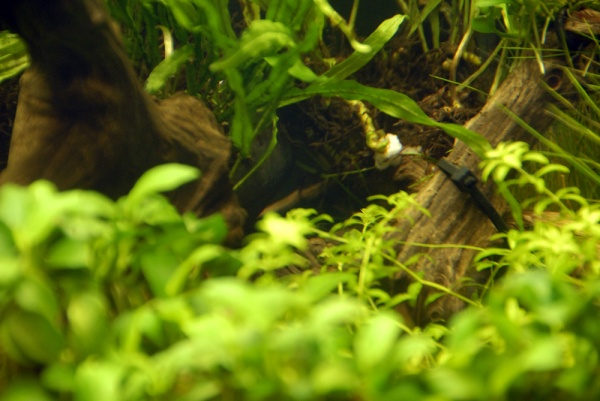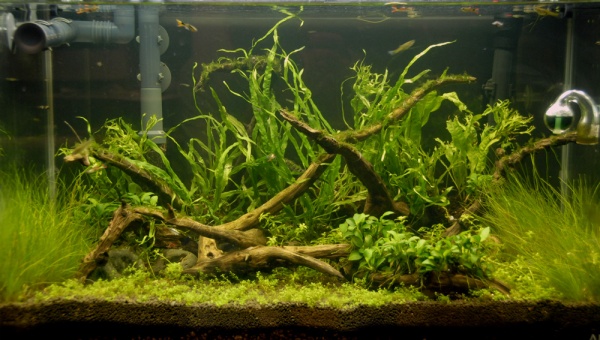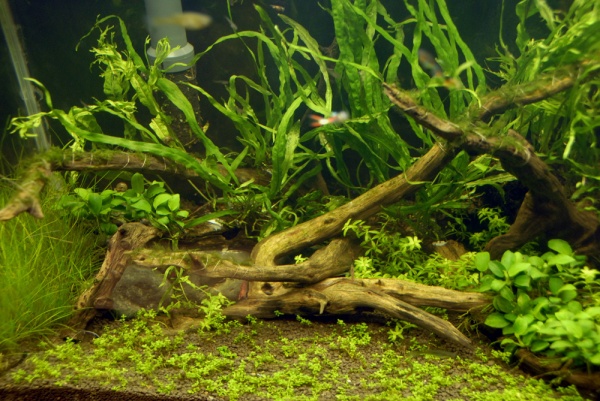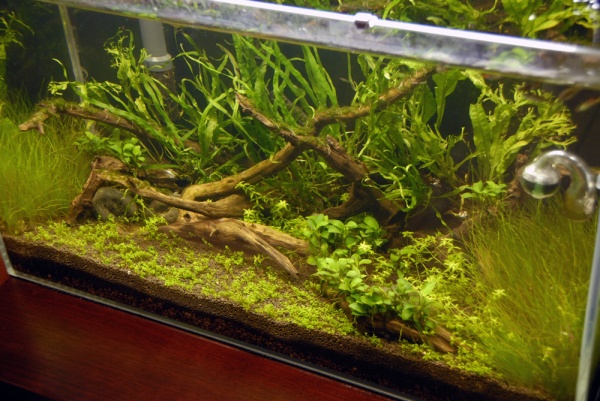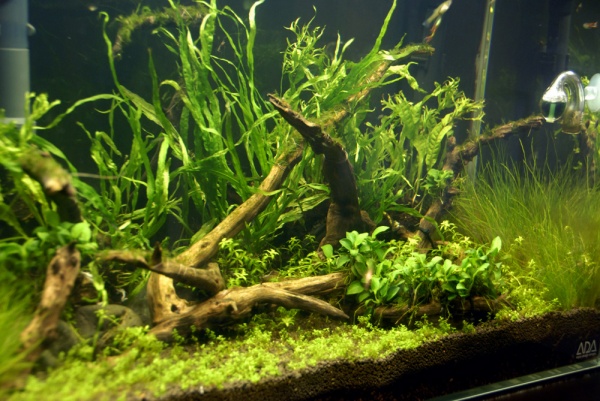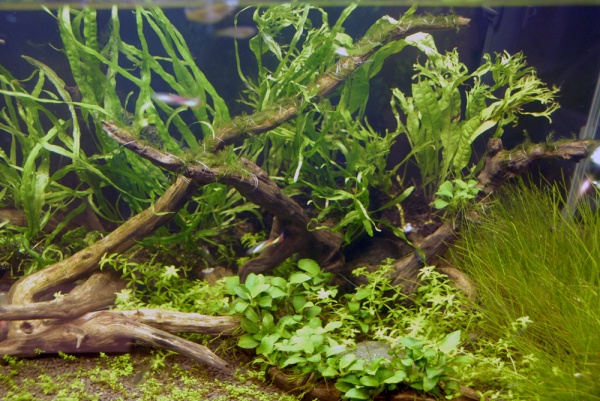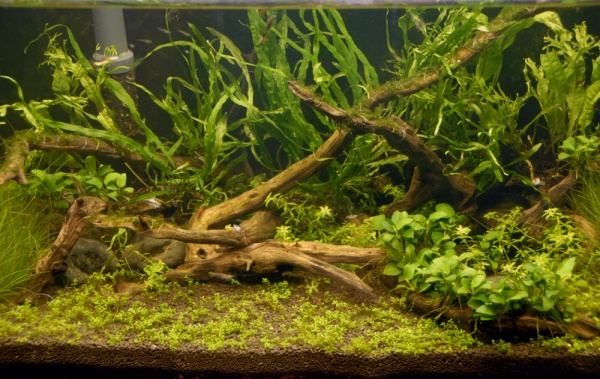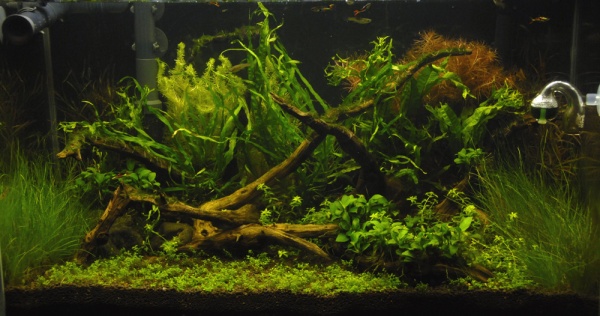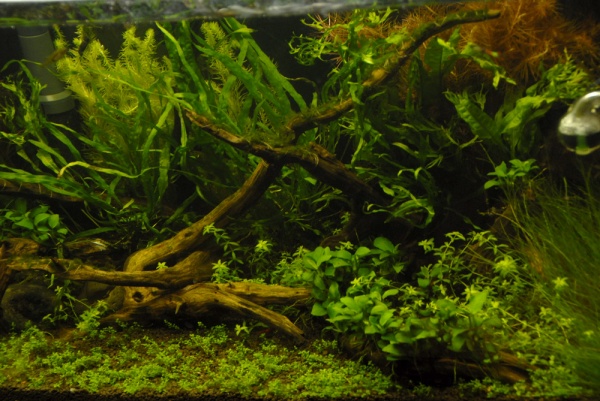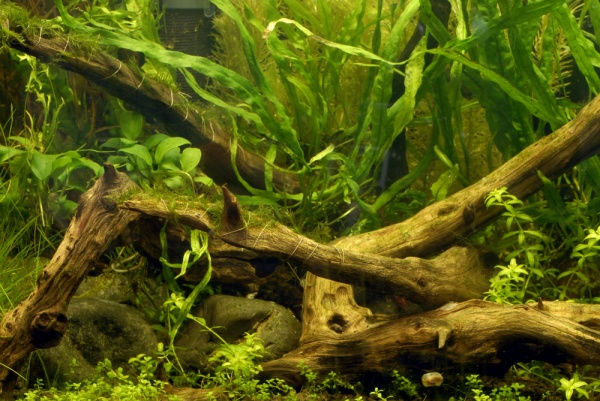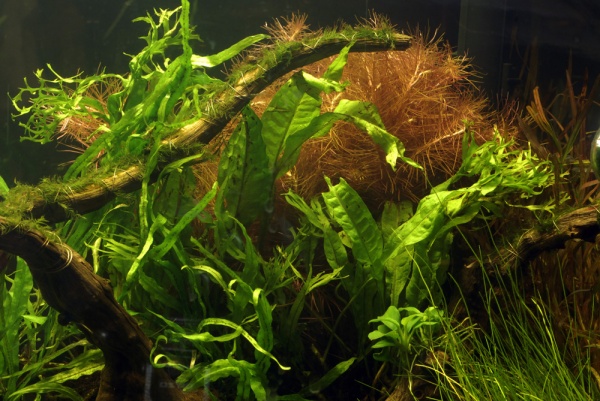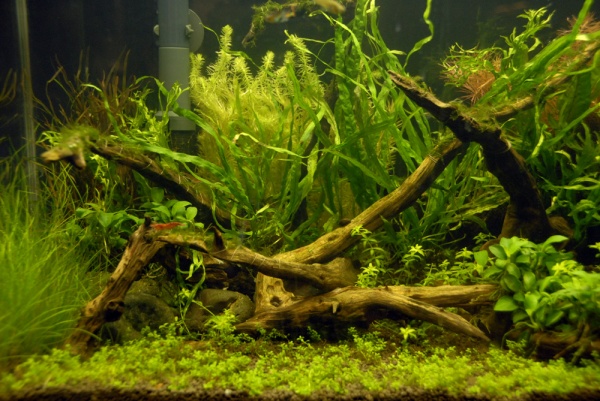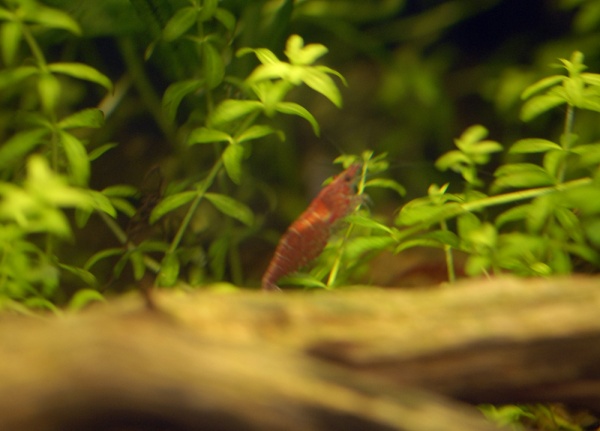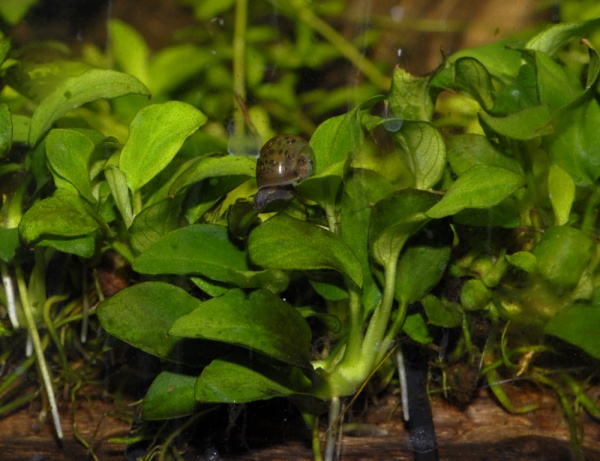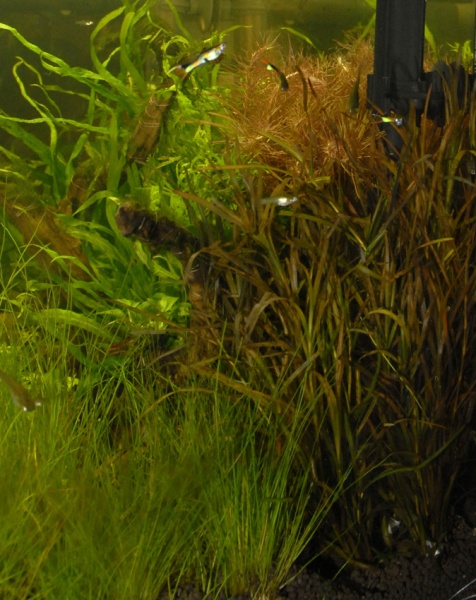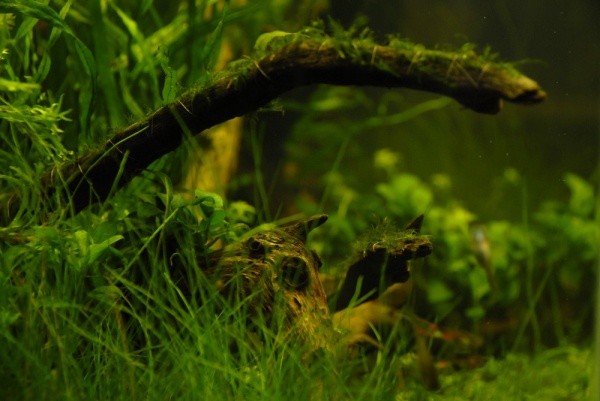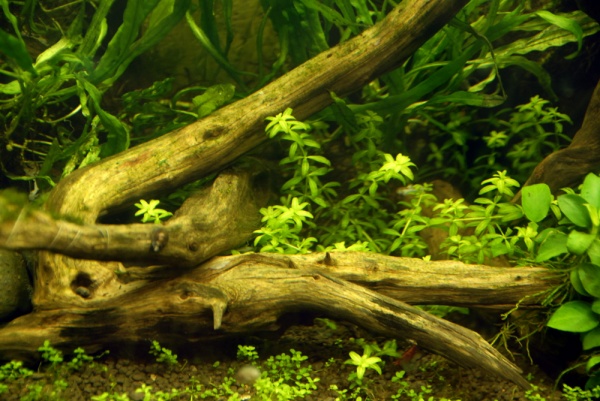elwaine
Aquarium Advice Activist
- Joined
- Nov 11, 2008
- Messages
- 174
Update - 1st planting
The water is still cloudy and tannins are leaching into the water from the driftwood - so that's why things look yellow at the moment. Here's what I planted so far:
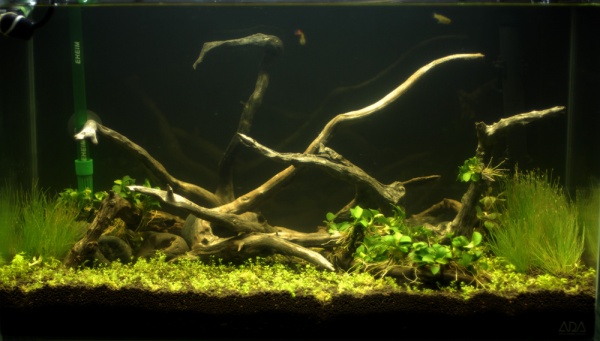
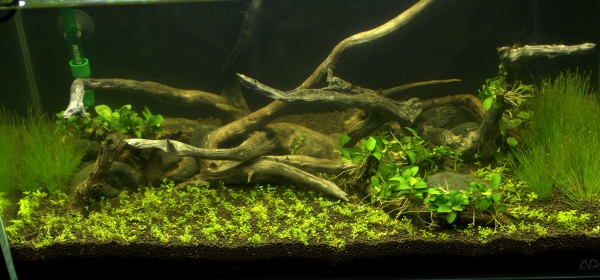
Plant List (so far):
Epiphytes on driftwood: Anubias nana petite - #1 in photos
Mid-ground sides: dwarf Hairgrass (Eleocharis acicularis) - #2 in photos
Foreground sides: HM (Hemianthus micranthemoides) - #3 in photos
Foreground center: HC (Hemianthus callitrichoides) - #4 in photos
Low background: Lobelia cardinalis small form: - #5 in photos
Right side:
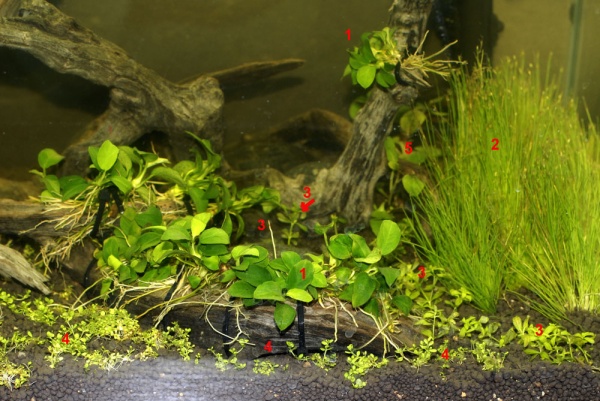
Left side:
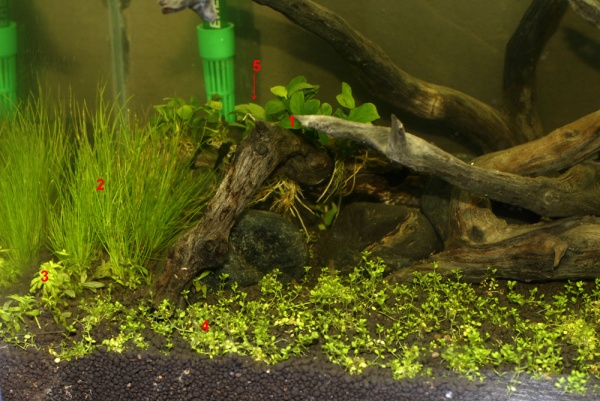
The 3-D in these photos is lost. The HC goes considerably deeper into the back-center than can be appreciated in these photos. It grows between the gnarled tree roots (driftwood) and is already cool to look at - even in its current sorry state. It takes a few weeks until plants adjust to their new environment. After they adjust, the foreground and mid ground plants will green up, thicken up, and form carpets. (And if I say that with conviction 3 times fast, each evening for 3 weeks, that will actually happen.)
On each side, HM separates the HC from the dwarf hairgrass and will have a layered look when both fill out and grow into carpets... a great suggestion by czcz.
Still to come: Java moss, which will be tied to the "wings" of the driftwood sculpture. That arrives next week.
Java fern (needle leaf - currently out of stock everywhere). They will provide a strong visual focal point when tied to the lower branches of driftwood.
Finally, umbrella hairgrass for the background (also unavailable at this time).
The water is still cloudy and tannins are leaching into the water from the driftwood - so that's why things look yellow at the moment. Here's what I planted so far:


Plant List (so far):
Epiphytes on driftwood: Anubias nana petite - #1 in photos
Mid-ground sides: dwarf Hairgrass (Eleocharis acicularis) - #2 in photos
Foreground sides: HM (Hemianthus micranthemoides) - #3 in photos
Foreground center: HC (Hemianthus callitrichoides) - #4 in photos
Low background: Lobelia cardinalis small form: - #5 in photos
Right side:

Left side:

The 3-D in these photos is lost. The HC goes considerably deeper into the back-center than can be appreciated in these photos. It grows between the gnarled tree roots (driftwood) and is already cool to look at - even in its current sorry state. It takes a few weeks until plants adjust to their new environment. After they adjust, the foreground and mid ground plants will green up, thicken up, and form carpets. (And if I say that with conviction 3 times fast, each evening for 3 weeks, that will actually happen.)
On each side, HM separates the HC from the dwarf hairgrass and will have a layered look when both fill out and grow into carpets... a great suggestion by czcz.
Still to come: Java moss, which will be tied to the "wings" of the driftwood sculpture. That arrives next week.
Java fern (needle leaf - currently out of stock everywhere). They will provide a strong visual focal point when tied to the lower branches of driftwood.
Finally, umbrella hairgrass for the background (also unavailable at this time).

